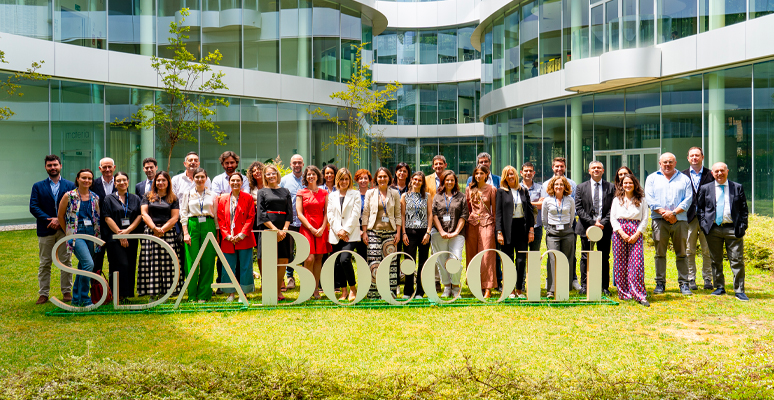For nearly twenty years now, a focus area for SDA Bocconi School of Management has been the development of management skills for the strategic programming and administration of EU funding. This means consistently applying a management-based approach - specifically public management – to this external source of financing for a range of stakeholders. Included here are member nations and the various administrative levels of their governments tasked with programming this funding (regions, and national ministries/agencies), beneficiaries (public bodies, companies, third-sector associations and organizations, to name the most representative), implementing entities and final recipients.
The latest output this extended experience is the recent book by Veronica Vecchi and Niccolò Cusumano, Finanziamenti comunitari 2021-2027. Strategie e strumenti per autorità, published by Egea in August, 2022.
Why adopt a management approach to EU funding?
EU funds are not only a source of external financing for public administrations and companies (for-profits and non-profits alike). Above all, they represent political action that aims to support the three dimensions of sustainable development (economic, social and environmental), and which can combat climate change and promote energy transition, innovation and equity. In light of this, a management approach is essential for programming these funds at a national and regional level in such a way as to effectively achieve these policy objectives, and at a local level to develop and manage system planning that serves to engender real change. To do all this, we need to know the rules of the funds, and more importantly, we have to adopt management principles. With our book, we want to initiate a step change, so that EU funding is not merely seen as a source of financing to exploit in an opportunistic way by navigating a set of rigid administrative procedures. Instead, these funds are much more.
What are the main tools to use to strategically manage the opportunities offered by Community programs?
A strategic approach calls for two essential tools. First, the financeability matrix, the purpose of which is to foster and facilitate the move beyond a contingent approach to EU funding, and to encourage its utilization in conjunction with other sources of financing, in keeping with the spirit of additionality, as called for by the European Commission.
A second tool, or rather an approach, is a good project proposal based on the principles of change theory and project management, which makes it possible to organize activities relating to financing requests and to frame the intervention logic of the project in question.
These methodologies and tools are valid transversally for various programs, enabling organizations to seize opportunities. What’s more, access to these funds becomes ordinary, rather than extraordinary - which would lack the capacity to contribute to objectives of change or to generate financial leverage and additionality. In addition, when the procedure for activating and deploying funds is ordinary, and an integral part of strategic, financial, and operational programming for an organization, the possibilities for successfully utilizing these resources multiply. But most importantly, these funds become an opportunity to innovate. And the validity of these tools goes beyond EU funds.
This is the third edition of your book. What new content have you included in this latest edition?
In addition to providing an updated framework of the principal policies (cohesion, and research and innovation), there is a new chapter on the topic of blending finance and financial instruments. It’s certainly nothing new, the possibility of moving beyond an allocation approach for EU funds based on non-repayable grants. But at a time when we’re seeing a remarkable convergence between the public and private spheres to achieve sustainability goals, and with the private liquidity earmarked for sustainable, impactful investments exceeding public budgets, we have to prioritize the use of European funds to generate financial additionalities and facilitate private investments. So more so than technical competencies, the PAs involved in programming this funding have to come up with a new strategic vision. Of course, this is an opportunity we can’t pass up. The book concludes with some reflections on the PNRR (National Recovery and Resilience Plan), which no doubt represents a new feature on the funding landscape, also due to the fact that investments and reforms are very closely connected.
Read more on SDA Bocconi Insight
SDA Bocconi School of Management






